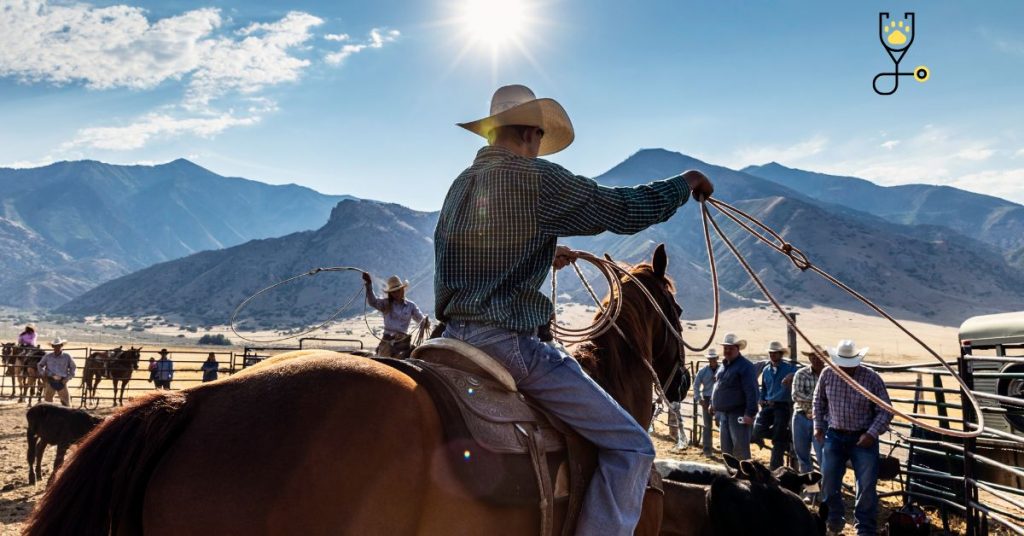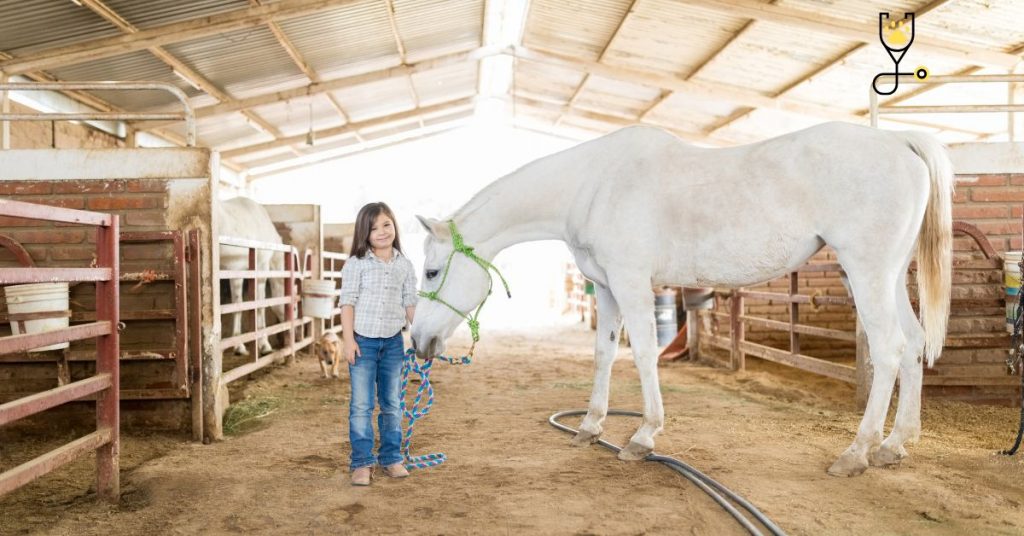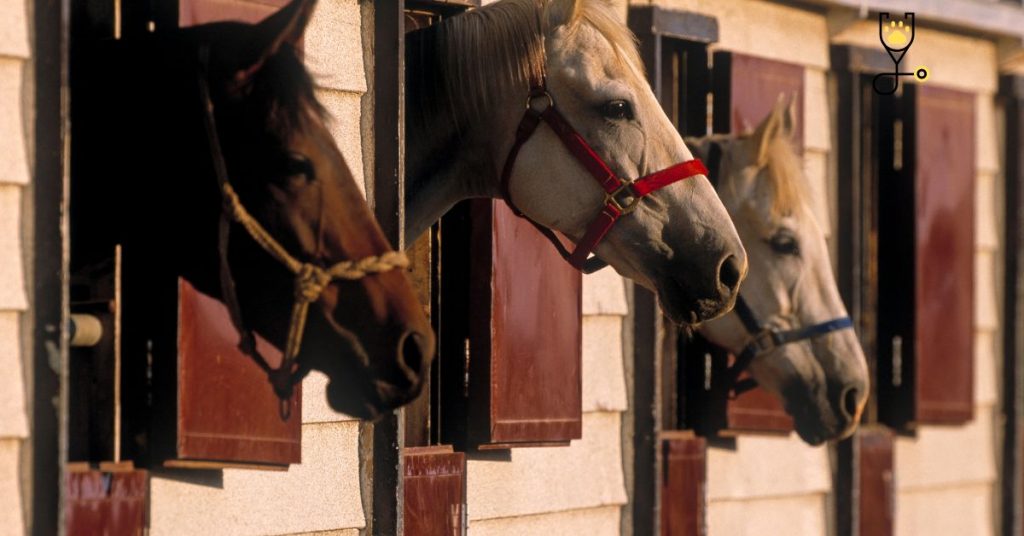When it comes time to board your horse, where should you go? There are many different types of boarding stables, and each has its own quirks and benefits. So, which one is right for you and your horse? In this post, we’ll take a look at nine different types of boarding stables, from traditional livery yards to dude ranches. We’ll also discuss the pros and cons of each type so that you can make an informed decision before handing over your hard-earned money. Happy boarding!
What are board stables?
Boarding stables are facilities that provide the necessary care for horses and other equines. They offer a place to house, feed, and groom horses, as well as provide medical and veterinary care. Boarding stables come in many forms, each with its own unique features and benefits.

Different Types of Horse Boarding Stables
1. Traditional Livery Yards
These yards usually offer full-care boarding services, meaning that your horse will be fed, groomed, and exercised on a regular basis for an added fee. They typically include several acres of pastures or paddocks for the horses to graze in and stabling facilities with stalls, feed rooms, tack rooms, wash racks, and more.
- Pros: Your horse will get plenty of exercises and individual care; there is a wide range of services available depending on your needs.
- Cons: Fees are often expensive; these yards can be overcrowded at times.
2. Private Boarding Stables
These stables offer similar amenities as traditional livery yards but are usually privately owned by one or two individuals. They tend to be smaller and more intimate than larger livery yards, with fewer horses boarding there at any one time.
- Pros: Fees are often lower; you can get to know the owners and other boarders easily.
- Cons: Services may be limited due to the size of the stable; quiet hours are usually enforced.
3. Dude Ranches – These ranches provide a unique lodging experience for horse lovers who want something different from a traditional boarding facility. Guests can enjoy horseback riding, campfires, and trail rides while their horses stay in safe and comfortable stalls or paddocks during the day.
- Pros: Usually quite affordable; great opportunity to socialize with other like-minded riders.
- Cons: Amenities can be limited; may be more restrictive than traditional boarding stables.

4. Show Barn
These barns are focused on horse shows and competitions, so they’re a great choice for riders who want to take part in events or hone their skills. Many show barns offer full-care boarding services as well as training and instruction programs.
- Pros: Great place to learn and compete; many different amenities are available to help you care for your horse.
- Cons: Fees can be high due to the specialized nature of these facilities; hours can be rather strict during competition season.
5. Equine Retirement Centers
For retired horses, equine retirement centers provide safe and comfortable living conditions where their owners can visit them from time to time. These facilities offer full-care services such as regular grooming, feeding, and exercise.
- Pros: A safe place for retired horses to live out their days; owners can visit when they have time.
- Cons: Fees are usually higher than traditional boarding stables; may not be suitable for active horses.
6. Horse Havens
These facilities offer temporary care for horses who are in need of a safe place to stay while their owners are away or unable to care for them due to illness or other circumstances. They provide basic care such as feeding and grooming but do not typically offer any additional training or riding instruction.
- Pros: Safe environment for horses in emergency situations; fees are often lower than other types of stables.
- Cons: Services may be limited compared to more traditional boarding stables; may not be suitable for active horses.
7. Equine Therapy Centers
These centers provide a unique environment where riders with physical and mental disabilities can learn to ride and care for horses under the supervision of experienced professionals. They often have specialized facilities such as indoor riding arenas, obstacle courses, and therapy pools, plus trained therapists on staff.
- Pros: Great opportunity to build confidence; a safe place to learn without fear of judgment.
- Cons: Fees tend to be higher than most other types of stables due to the specialized nature of the program; hours are typically strict due to safety reasons.

8. Horse Hotels
Also known as layovers or overnight stays, horse hotels offer short-term lodging for horses who need a place to stay for a few hours or days. They usually provide basic amenities such as feeding and grooming, plus overnight accommodations in stalls or paddocks.
- Pros: Great alternative to traditional boarding stables; can save money if you just need a short-term solution.
- Cons: Services may be limited compared to other types of stables; may not be suitable for active horses.
9. Equine Universities
Popular among competitive riders and equestrians, equine universities provide comprehensive training programs with top-notch facilities and instructors. They usually offer lodging options such as dorms or cabins, plus specialized instruction for different disciplines.
- Pros: Great place to learn the ins and outs of horsemanship; many unique amenities are available for riders.
- Cons: Fees tend to be higher than traditional boarding stables due to the extra amenities; hours can be rather strict during competition season.
Conclusion
Depending on the type of horse you own and your budget, there are many different types of boarding stables available. From show barns to equine universities, these facilities offer a variety of services and amenities to fit your needs. Be sure to research each type carefully so you can find the best option for you and your horse.
Frequently Aske Questions
Q: What is the difference between a boarding stable and a show barn?
A: Boarding stables generally offer basic care such as feeding and grooming, while show barns provide specialized training and instruction for riders competing in equestrian competitions. Show barns tend to have more amenities than traditional boarding stables.
Q: How much do different types of stables cost?
A: Costs vary depending on the type of facility and the services they offer. Generally speaking, show barns tend to be more expensive, followed by retirement centers and university programs. Basic care facilities such as horse hotels are typically the most affordable option.
Q: Are there any safety regulations I should be aware of when choosing a stable?
A: Yes, safety is always a priority. Be sure to research the facility’s regulations and policies before committing to a boarding agreement. Additionally, make sure they have experienced staff on hand in case of an emergency.
Q: Are there any other considerations I should take into account when choosing a stable?
A: Yes, it’s important to consider the location of the stable, as well as its proximity to other services and amenities you might need. Additionally, check for reviews from previous clients in order to get an accurate picture of the quality of the facility. Lastly, make sure the environment is suitable for your horse’s needs and temperament.





